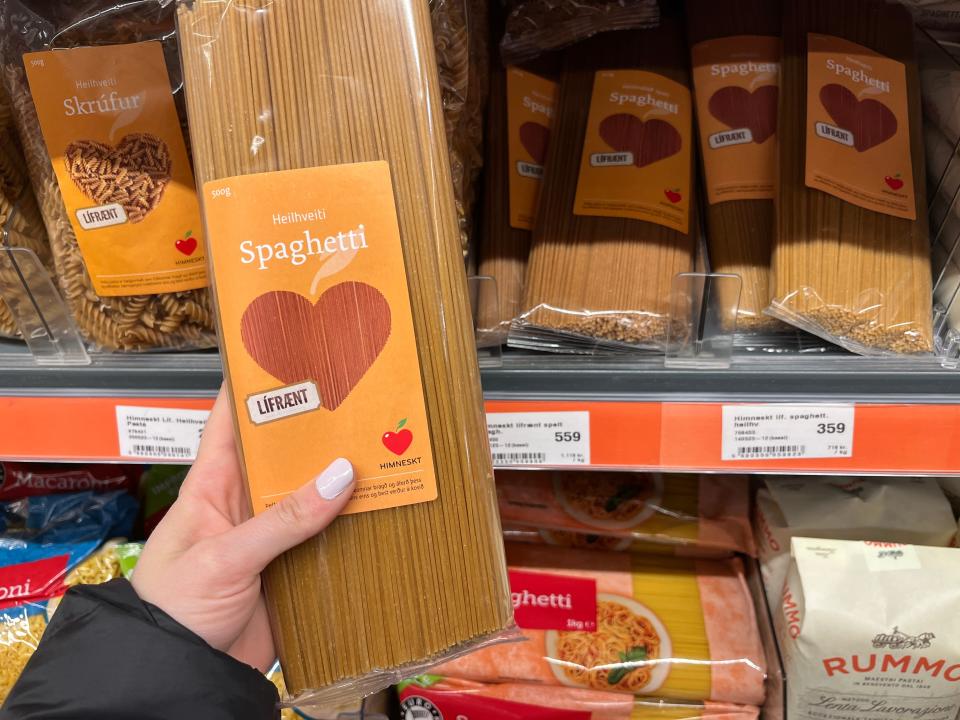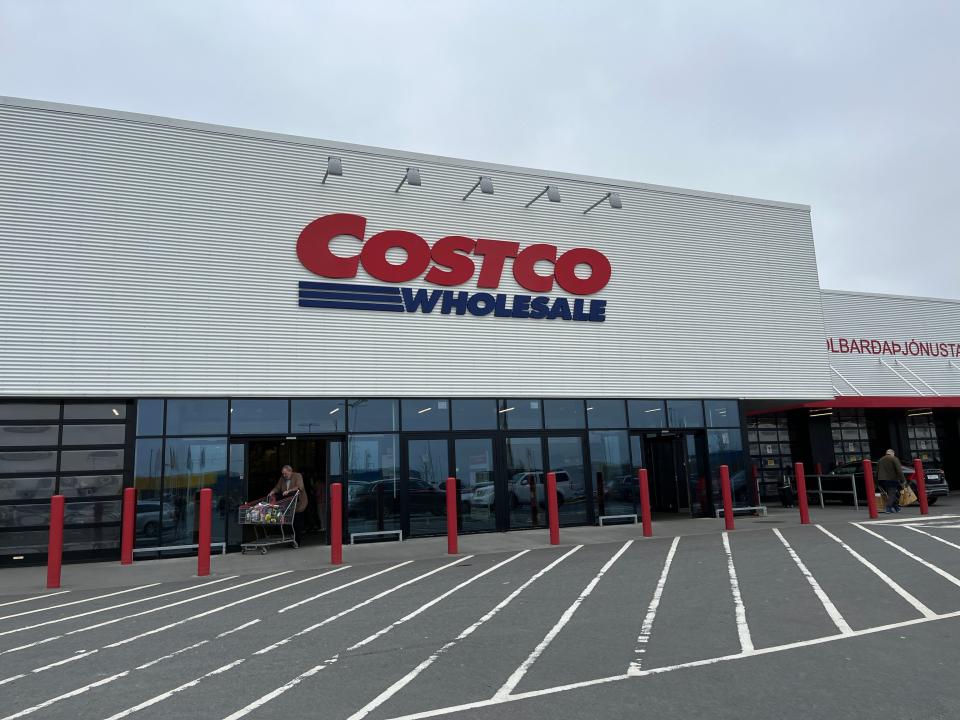I compared grocery prices of 7 items in America and Iceland, and I was shocked by the high cost of US staples abroad
On a recent trip to Iceland, I visited three grocery stores to compare prices with items in the US.
While produce in Iceland was cheaper, most basics like eggs and milk were more expensive.
Costco rotisserie chickens in Iceland cost twice as much as they do in the US.
On a trip to Iceland in June, I visited three supermarkets to see how prices compare to American grocery stores.
I shopped at two Icelandic chains, Hagkaup and Krónan, as well as Iceland's one and only Costco location, and recorded the costs of seven US grocery staples like eggs, milk, and pasta. Then, I compared the prices to those listed at my local Target and Costco stores in New York City.
Overall, I found that prices in Iceland were much higher than the US — for some US favorites like Costco rotisserie chickens, as much as double.
Take a look at how some grocery prices in Iceland compare to the US.
On my trip to Iceland, I went grocery shopping at Hagkaup, a one-stop shop known as the "Walmart of Iceland."

Hagkaup (pronounced HOW-kup) is an Icelandic retailer with seven locations across the country.
Travel bloggers, Iceland travel guides, and sites like Globe City Guide have compared Hagkaup to Walmart for its wide-ranging selection of food, housewares, clothes, cosmetics, crafts, toys, and other items.
At Hagkaup, a family-size box of Cheerios cost 999 ISK, or about $7.20.

The store also sold other American cereal brands like Frosted Flakes, Rice Krispies, Special K, and Cocoa Puffs.
At my local Target in New York City, a family-size box of Cheerios costs $5.89.

The cost is likely higher in Iceland since it's an imported American brand.
One liter, or about a quart, of semi-skimmed milk in Iceland cost 219 ISK, or about $1.58.

I was surprised to find that milk wasn't sold in amounts larger than one liter at Hagkaup.
At Target, a half gallon of skim milk costs $2.89 — a better price for twice the amount.

A similar amount of milk would have cost about $3.16 with Iceland's prices.
At Hagkaup, 500 grams, or a little over one pound, of spaghetti was priced at 559 ISK, or about $4.09.

The spaghetti I photographed was organic whole-wheat pasta, which is usually slightly more expensive than regular spaghetti.
One kilogram, or 2.2 pounds, of regular spaghetti at Hagkaup cost 1,178 ISK, or about $8.53. At this price, one pound of spaghetti would cost about $3.87.
One pound of spaghetti is only $1.99 at Target.

Both whole-wheat and regular pasta were nearly twice as expensive in Iceland.
I also visited Iceland's only Costco location to compare prices with US stores.

Iceland's first and only Costco store opened in 2017 in Garðabær, about 6 miles south of Reykjavík.
At the Icelandic Costco, a rotisserie chicken was priced at 1,499 ISK, or about $10.86.

The Kirkland Signature branding was the same as the US.
Costco rotisserie chickens are much cheaper in the US at $4.99.

The rotisserie chickens are often scooped up by waiting customers as soon as they hit the store shelves.
In Iceland, a 24-pack of large white eggs sold for 1,399 ISK, or about $10.13.

The packaging advertised that the eggs came from free-range chickens.
At American Costco stores, the same amount of eggs costs $5.99.

The Kirkland Signature eggs come from cage-free chickens, meaning they can roam inside their barns but often don't have outdoor access, while free-range chickens can go outside.
Finally, I went to the Icelandic grocery chain Krónan.

There are 26 Krónan locations across Iceland, according to the retailer's official website.
At Krónan, a can of black beans costs 195 ISK, or about $1.41.

A can of kidney beans cost 190 ISK, or about $1.37, while canned chickpeas cost 260 ISK, or about $1.88.
In the US, Target-brand black beans are priced at 85 cents each.

Both the regular and low-sodium beans cost the same amount.
Krónan had a promotion selling five pieces of fruit for 229 ISK, or $1.59.

A mix of apples, pears, and kiwi were included in the sale.
Produce at Target was more expensive, with individual pieces of fruit ranging from 79 cents to 99 cents each.

Produce was the only item that I found to be cheaper in Iceland, though that may have been because of the promotion offered by Krónan.
While I'd heard that Iceland is an expensive place to travel, I was still surprised by how much higher the grocery prices were in the stores I visited.

Living in New York City, I thought I was used to high supermarket prices, but I was still shocked by how the cost of food added up during my trip.
And it's not just food that makes Iceland expensive. The cost of living is 15.8% higher than the US, according to Numbeo, a website that provides crowdsourced summaries of the cost of living in major cities across the world.
Prices for food and other goods are often steeper in Iceland since the country relies heavily on highly-taxed imports, Iceland Review magazine reported.
I found that it was worth booking hotels that included breakfast both for the convenience and in order to save some cash.
Read the original article on Insider

 Yahoo News
Yahoo News 
